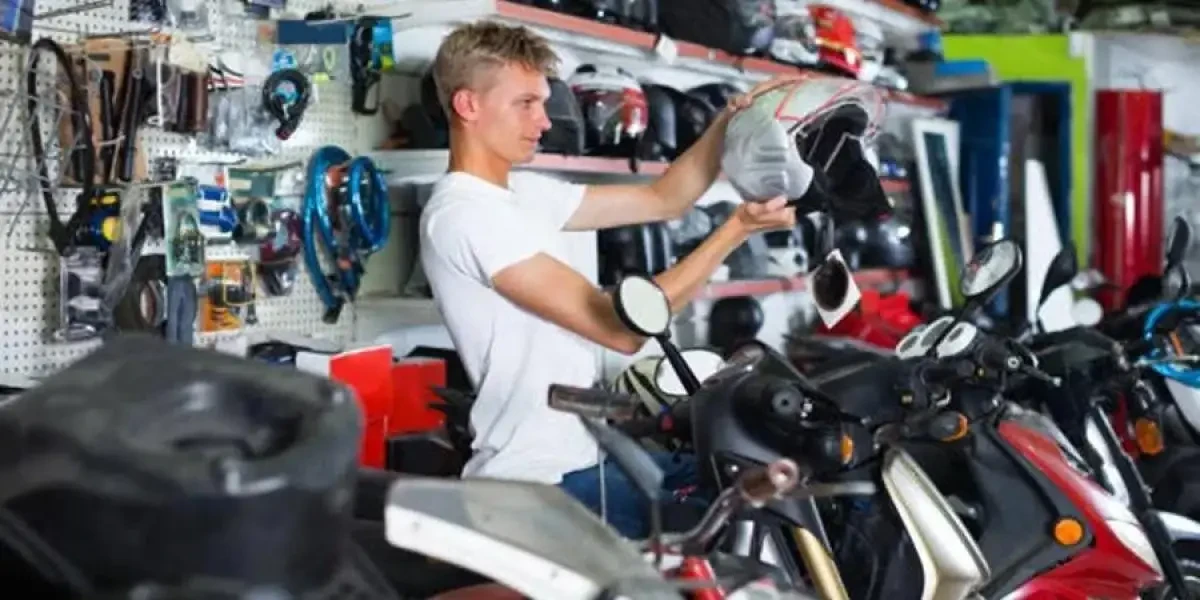Must-Have Motocross Gear: Elevate Your Riding Experience Today
Must-Have Motocross Gear: Elevate Your Riding Experience Today
Blog Article
Understanding the Crucial Parts of a Motorcycle: A Comprehensive Overview for Enthusiasts
For motorbike enthusiasts looking to elevate their riding experience and guarantee their bikes run efficiently, understanding the necessary elements of a motorcycle is extremely important. Each aspect, from the engine's intricate operations to the critical function of the braking systems, not only influences performance however additionally security and comfort.
Engine Components

The camshaft plays a critical function in regulating the timing of the engine's valves, making sure the accurate opening and closing essential for effective gas and air consumption, in addition to exhaust expulsion. This timing is critical to preserving optimum engine efficiency and efficiency. Additionally, the carburetor or fuel shot system, relying on the motorcycle design, is in charge of blending air with fuel in the right proportion for combustion.
The air conditioning system, either air or liquid-based, works to maintain the engine's temperature level within operational limits, preventing overheating and making sure durability - motocross parts nz. Each component, thoroughly designed and incorporated, adds to the seamless operation of the engine, defining the motorbike's power result and overall performance
Transmission System
Essential to the bike's functionality, the transmission system makes sure reliable power transfer from the engine to the wheels. This system makes up numerous crucial elements, consisting of the clutch, transmission, and final drive, each playing a vital role in equating the engine's power into movement. The clutch, generally operated by a hand bar, offers to engage and disengage the engine from the transmission, enabling smooth equipment modifications and regulated velocity.
The transmission, usually referred to as the transmission appropriate, consists of a collection of equipments that riders can manually move with to change the bike's speed and torque output. These equipments are organized in a sequence that enables the motorbike to accelerate efficiently and keep optimum engine efficiency across various speeds. Most bikes make use of a consecutive transmission, calling for the motorcyclist to shift equipments in a predetermined order.
Braking Mechanisms
While recognizing the transmission system is key to taking advantage of a motorcycle's power, equally important is the capacity to regulate and quit that power properly, which is where stopping mechanisms enter play. Brakes are important for safety and efficiency, supplying the biker with the essential control to browse various surfaces and conditions. Commonly, bikes feature 2 kinds of stopping systems: disc brakes and drum brakes.
Disc brakes are much more prevalent in modern motorcycles due to their remarkable efficiency. This system provides far better warmth dissipation, constant efficiency, and boosted quiting power, especially in damp conditions.
Alternatively, drum brakes, continue reading this though less typical, are still discovered in some motorcycles. They work by pushing brake shoes versus the inner surface of a drum affixed to pop over to this site the wheel. While typically much less efficient in warm dissipation and quiting power, drum brakes are less complex and much more economical.
Recognizing these braking systems' nuances permits cyclists to maintain their motorcycles appropriately and value the engineering that guarantees risk-free and reliable stopping.
Suspension and Steering
Suspension and steering systems are important parts that substantially affect a bike's handling and adventure comfort. The shock absorber, containing forks at the front and shock absorbers at the back, soaks up road irregularities, improving stability and control. Front forks, upside down or generally telescopic, compress and rebound to reduce effects, while rear shock absorbers keep tire contact with the road, essential for traction and security.
Steering, focused around the handlebars, attaches the cyclist to the motorbike's directional control. The steering head bearings make certain smooth operation, allowing accurate maneuverability. Correct placement and maintenance of these bearings are essential for predictable steering action and minimizing cyclist fatigue.
The suspension's adjustability is another vital aspect; preload, damping, and rebound settings allow customization to suit numerous riding designs and problems. This adaptability is crucial for learn the facts here now enhancing performance, whether navigating urban streets or tackling rugged tracks. Developments like electronic suspension systems provide real-time modifications, boosting adventure quality across varied terrains.

Electrical Solutions
After making certain a regulated and smooth ride via reliable suspension and guiding systems, interest transforms to the electrical systems, a crucial element of modern motorbikes. These systems play a critical function not just in starting the engine yet additionally in powering different parts that improve the functionality and security of the bike.
At the heart of a motorbike's electric system is the battery, which shops electrical power required for beginning the engine and powering auxiliary systems - motocross gear nz. The alternator or generator, combined with the rectifier-regulator, makes certain the battery remains charged while the motorcycle functions, transforming mechanical power into electrical energy and keeping voltage degrees
The ignition system, another vital element, is in charge of sparking the air-fuel blend in the engine's cyndrical tubes. Modern bikes commonly make use of an electronic ignition system, offering higher performance and dependability contrasted to traditional systems.
Illumination systems, including headlights, tail lights, and signs, are likewise crucial, ensuring presence and safety for the biker. Extra electronic components such as sensing units, control systems, and shows add to advanced attributes like gas injection management, anti-lock stopping systems (ABDOMINAL MUSCLE), and digital dashboards, further improving the riding experience.
Conclusion
An extensive understanding of a bike's necessary elements, including the engine, transmission system, stopping devices, suspension, steering, and electric systems, is important for enthusiasts aiming to optimize comfort, safety and security, and efficiency. Proficiency of these aspects enables informed choices regarding upkeep and upgrades, inevitably improving the riding experience. By integrating this understanding, riders can ensure their motorcycles run at peak efficiency and dependability, therefore maximizing both satisfaction and longevity of their automobiles.
For motorcycle enthusiasts looking to raise their riding experience and ensure their bikes run smoothly, understanding the important parts of a bike is critical.Indispensable to the motorcycle's capability, the transmission system makes sure efficient power transfer from the engine to the wheels.While understanding the transmission system is crucial to using a bike's power, similarly essential is the capability to regulate and quit that power properly, which is where braking devices come into play. Normally, bikes feature two types of braking systems: disc brakes and drum brakes.
An extensive understanding of a bike's vital components, including the engine, transmission system, stopping mechanisms, suspension, steering, and electrical systems, is vital for lovers aiming to maximize comfort, safety, and performance.
Report this page